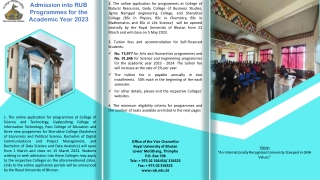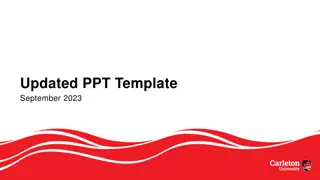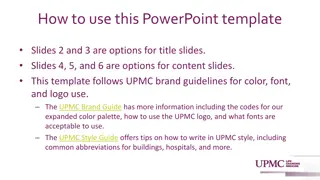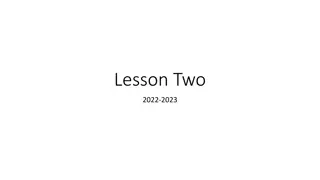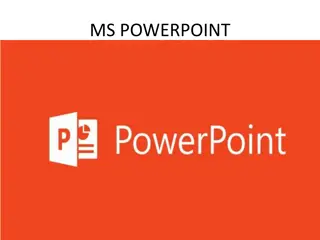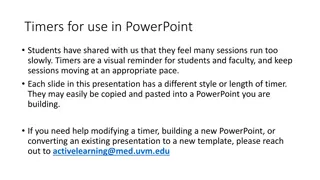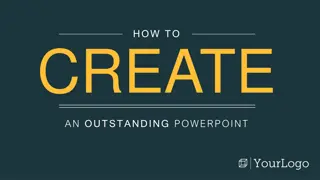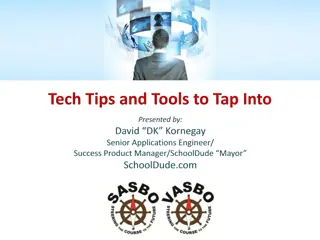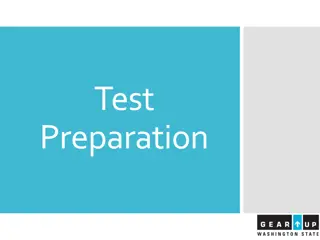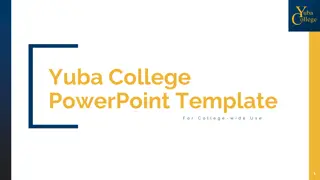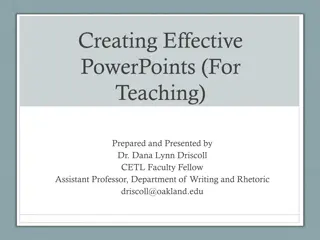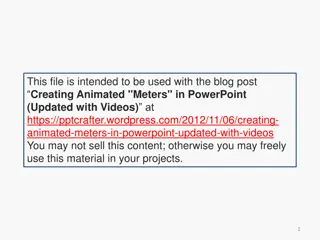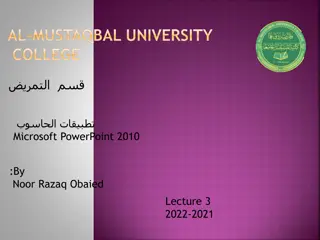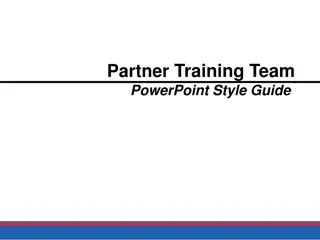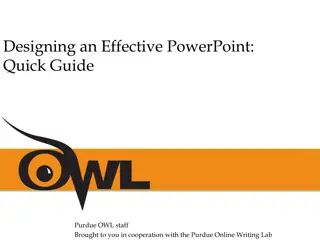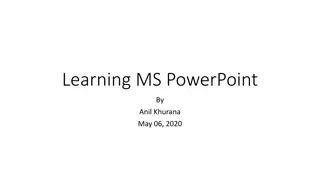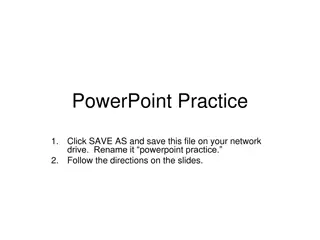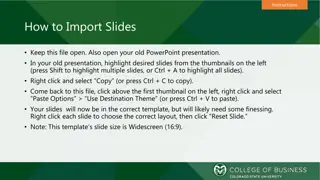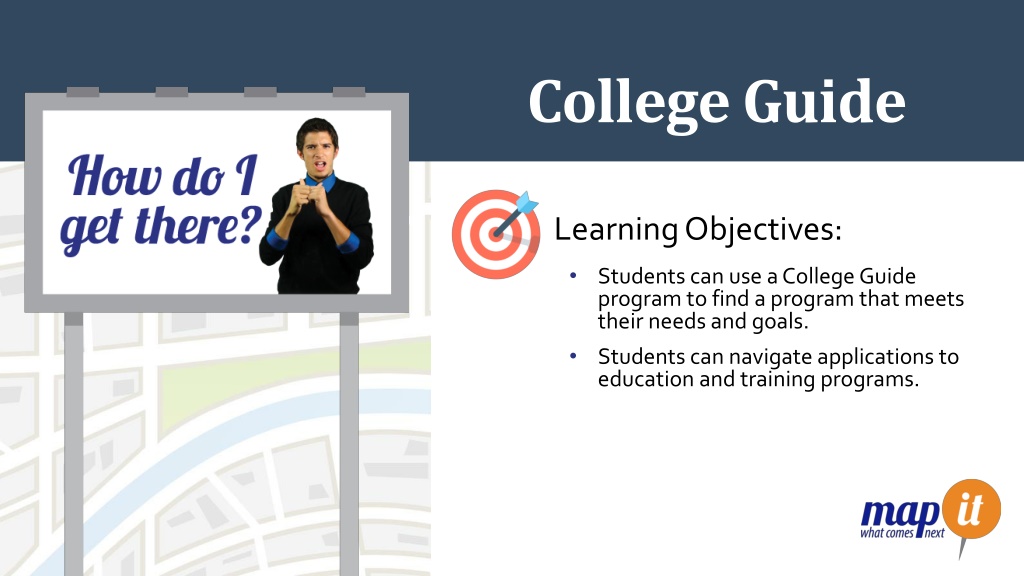
Unlocking College Success through Guided Learning
Explore a comprehensive College Guide program designed to assist students in finding education and training programs aligned with their aspirations. Engage in guided imagery exercises, reflective activities, and online mapping tasks to enhance decision-making skills for college selection. Dive into Disability Services for Students (DSS) exploration and career-related insights through Career Central. Get ready to embark on a fulfilling educational journey with valuable resources and strategies.
Download Presentation

Please find below an Image/Link to download the presentation.
The content on the website is provided AS IS for your information and personal use only. It may not be sold, licensed, or shared on other websites without obtaining consent from the author. If you encounter any issues during the download, it is possible that the publisher has removed the file from their server.
You are allowed to download the files provided on this website for personal or commercial use, subject to the condition that they are used lawfully. All files are the property of their respective owners.
The content on the website is provided AS IS for your information and personal use only. It may not be sold, licensed, or shared on other websites without obtaining consent from the author.
E N D
Presentation Transcript
College Guide Learning Objectives: Students can use a College Guide program to find a program that meets their needs and goals. Students can navigate applications to education and training programs.
College Guide: Guided Imagery Exercise Kick-off Activity Begin [to] get into a comfortableposition with both of your feet plantedon the floor and your hands resting inyour lap or along your sides or in whateverposition is comfortable for you. Then [relaxing your body] begin to focus your awareness on yourbreath, breathing in and breathing outslowly and comfortably . - Create A Vision For Your Life-Guide Imagery by Bridgett Tulloh, https://youtu.be/9r9c7KBRc3c (9:37).
College Guide: Take a moment to regroup after the Guided Imagery exercise. Use the Think-Pair-Share strategy to reflect on your guided meditation: Classroom Activity 1. Think have students review and think about the below discussion prompts independently: What goals and actions will youneed to set in order to live a life of optimal health? What support do you need? Who do you need to be right now, in orderto move forward? Whatstands out most in your memory of thelast few years? What do you need to be most awareof to get from where you are now towhere you hope to be? 2. Pair have students pair themselves with a comfortable partner and take turns sharing perspective of topic. 3. Share have students share their answers, thoughts, or opinions with the whole group. Facilitate the discussion and thank students for sharing about themselves.
Map It Online Activity: Review the 5 different considerations students should use when searching for the best college or training fit: 1. Does the school have the type of degree or training program you want? 2. Is the size of the school important to you? 3. Is location important for you? 4. Is the type of school important for you? 5. Is cost important to you? Online College Guide Choose a campus and look at Disability Service for Students (DSS) to learn about the following: 1. Does the school have the accommodations you need? 2. Do you need more specialized academic supports? 3. Is it important for there to be other deaf or hard of hearing students at the school and what is the Deaf community like off campus?
Map It Online Activity: Reflect on Allison s College Search process. Further explore education and training programs related to career interests on Career Central. Complete the Your Turn slide. Consider printing this slide to make notes while searching for information and then enter into Map It. Allison s College Search, Search Career Central, and Your Turn
College Guide: The purpose of this activity is to learn how disability services differ between high school and college, how to navigate a website to gain information, and develop an understanding of what you will need to do before entering the program. DSS Scavenger Hunt Use the DSS Scavenger Hunt handout and access DSS websites to find the answers. If the information is not available, email your question to a DSS counselor or try calling. Join a whole class discussion on what you found, noting similarities and differences between different DSS offices.
College Guide: The purpose of this activity is to understand what services are offered within a campus community. Each campus offers a variety of service and supports. Brainstorm different facilities and services typically available on campus. 1. Gather resource information specific to your chosen campus from the university or program website; 2. Create a table to organize your information and capture the name of place, purpose, location, and other important contact info 3. Mark on your calendar Freshman Orientation or Welcome Seminars and request accommodation for access. Campus Resource Map Reflection questions to consider: Name services new to you. How will you get around campus? Can you get medical and/or dental care on campus? Does the campus offer good dining options? What place(s) interest you for work? Does the campus offer mental health support? What places can help you connect to campus recreation? What types of entertainment are provided on campus? (Movie Theater, game room, art galleries, performance art, etc.) Are campus dorms in proximity to classes?
College Guide: Study Skill Questionnaire 1. Use the Study Skills Questionnaire handout to complete a self- assessment on time management, notetaking, reading, writing, test preparation, test taking, and other topics. 2. Make note of your strengths and weaknesses. 3. Create a SMART goal(s) to help improve study skills before high school graduation.
College Guide: Watch the following video covering the Myths About Financial Aid, https://youtu.be/K8JuaYVJ_LE. Learn about, review, and practice completing applications the following sites: Free Application for Federal Student Aid (FAFSA): https://fafsa.ed.gov/ Pell grants: https://studentaid.ed.gov/sa/types/grants- scholarships/pell Scholarships: Check with your chosen education/training program and/or search a national database, https://bigfuture.collegeboard.org/scholarship-search Work Study: https://studentaid.ed.gov/sa/types/work-study ABLE Accounts: http://www.ablenrc.org/about/what-are-able- accounts PASS: https://www.ssa.gov/disabilityresearch/wi/pass.htm Student Loans: https://studentloans.gov/myDirectLoan/index.action Financial Aid Awareness
Synthesis Activity: Watch the video, Pah! I m in College Now What?, https://www.dcmp.org/media/4910-pah-i-m-in-college-now-what (30:00) on DCMP. Meet Sarah, a deaf student, starting college who utilizes disability services to find out how to schedule interpreters and notetakers for classes and how to work with teachers. Starting a College Program Discussion prompts: When should you meet with DSS? What are three things you should discuss with the interpreter before the first class? What should you attempt to do when meeting your teacher for the first time? Name topics you should discuss when meeting with your teacher. What are the responsibilities of the student?
Synthesis Activity: Once your college search is narrowed down and you have begun to make campus visits, schedule an on-site or virtual face-to-face meeting with the campus DSS program. During the meeting, use the Questionnaire for Disability Services handout, which is specific to students who are deaf or hard of hearing. Start Job Search Process Ask The DSS counselor/coordinator specific questions on the following topics: Role of the Counselor or coordinator Process for requesting accommodations Process for changing accommodation request How conflict resolution is handled Types or levels of professional intervention or advocacy support Involvement in school sponsored activities
College Guide: Exit Slip 1. Based on your exploration with Career Central, list 1-2 education/training programs that meet your needs and career goals. 2. Choose one of the above programs and answer the following questions: When is the application deadline? Do you currently meet proficiency requirements? Yes or No If No, which area needs improvement? When is the next open house or tour? Does the program offer a virtual tour? Yes or No

